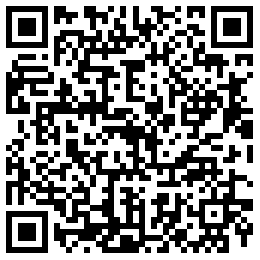| Author Name | Affiliation | | Yuan Liang | School of Aeronautics and Astronautics, Shanghai Jiao Tong University, Shanghai 200240, China | | Xingqun Zhan | School of Aeronautics and Astronautics, Shanghai Jiao Tong University, Shanghai 200240, China | | Wenhan Yuan | School of Aeronautics and Astronautics, Shanghai Jiao Tong University, Shanghai 200240, China | | Shuai Jing | School of Aeronautics and Astronautics, Shanghai Jiao Tong University, Shanghai 200240, China |
|
| Abstract: |
| A Wi-Fi fingerprinting localization approach has attracted increasing attention in recent years due to the ubiquity of Access Point (AP). However, typical fingerprinting localization methods fail to resist accidental environmental changes, such as AP movement. In order to address this problem, a robust fingerprinting indoor localization method is initiated. In the offline phase, three attributes of Received Signal Strength Indication (RSSI)—average, standard deviation and AP’s response rate—are computed to prepare for the subsequent computation. In this way, the underlying location-relevant information can be captured comprehensively. Then in the online phase, a three-step voting scheme-based decision mechanism is demonstrated, detecting and eliminating the part of AP where the signals measured are severely distorted by AP’s movement. In the following localization step, in order to achieve accuracy and efficiency simultaneously, a novel fingerprinting localization algorithm is applied. Bhattacharyya distance is utilized to measure the RSSI distribution distance, thus realizing the optimization of MAximum Overlapping algorithm (MAO). Finally, experimental results are displayed, which demonstrate the effectiveness of our proposed methods in eliminating outliers and attaining relatively higher localization accuracy. |
| Key words: Wi-Fi fingerprinting indoor localization Received Signal Strength Indication (RSSI) Access Point movement erroneous AP detecting algorithm |
| DOI:10.11916/j.issn.1005-9113.16187 |
| Clc Number:TN925.93 |
| Fund: |
|
| Descriptions in Chinese: |
| 一种AP移动情景下的鲁棒性Wi-Fi指纹室内定位方法 梁源,战兴群,袁文瀚,荆帅 (上海交通大学 航空航天学院,上海200240)#$TAB 创新点说明:(1)针对室内环境变化中的AP移动这一类问题,设计实验评估单个AP移动和多个AP移动对定位精度的影响,为后续设计检测滤除AP移动的算法提供参考。 (2)针对定位环境中AP移动这一现象,设计了一种三步决策的移动AP检测滤除算法。实验结果证明,本文提出的算法能够有效滤除移动AP,保证定位精度。 (3)针对指纹匹配过程中,多数算法无法兼顾定位精度和运算效率的问题,提出了一种基于MAximum Overlapping(MAO)算法的改进算法。实验结果证明,相比于原有MAO算法,优化后的MAO算法能够将定位精度进一步提高10%左右。 中文摘要:近年来,得益于普适计算思想的提出和无线局域网接入点(Access Point,AP)的大规模普及,Wi-Fi位置指纹室内定位系统引起越来越多的关注。然而,典型的位置指纹定位方法鲁棒性较差,无法抵御环境改变造成的精度下降,如AP位置的改变。因此,本文为了应对AP移动造成的精度下降问题,提出了一种鲁棒性的Wi-Fi指纹室内定位方法。在离线阶段, 计算接收信号强度指示(RSSI)的三种属性——均值,标准差和AP权值,用于后续的位置结算过程。这三种特征可以较为全面的挖掘强度值背后隐藏的位置信息。在在线阶段,本文设计了一种三步决策的移动AP检测滤除算法,用于检测和滤除位置发生移动的AP及相关指纹信息。在位置结算环节,为了兼顾定位精度和计算效率,本文介绍了一种新的指纹定位算法。其中,使用Bhattacharyya距离衡量RSSI分布之间的相似性,从而实现了对MAximum Overlapping(MAO)算法的优化。最后, 实验结果表明,本文提出的定位方法能够有效的去除离群值(移动AP),并实现了更高的定位精度。 关键词: Wi-Fi位置指纹定位,精度性能提升,AP移动,移动AP检测滤除算法,MAO |




